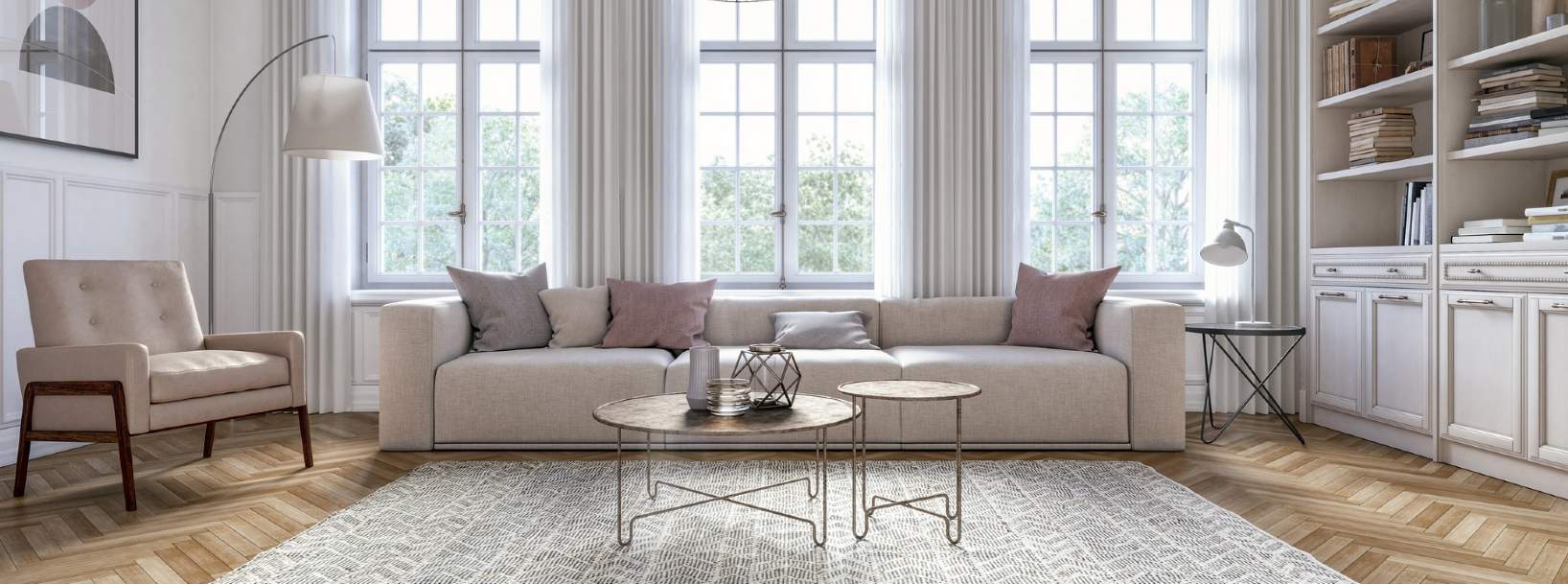Much like Miss Swift’s multiple outfits in a single show, interiors and architectural styles manage to be both ever-changing and enduringly popular.
Georgian Era (1714 – 1830)
Georgian homes are often characterised by their symmetry, elegance and large proportions. Influenced by classical civilisation and the Renaissance, they typically feature ornate cornicing, intricate mouldings, ceiling roses and decorative marble fireplaces. Walls often showcase muted pastels or richly textured wallpapers, alongside panelling which adds refinement.
Rooms were often dressed with pieces made from high-quality woods such as mahogany, oak, and walnut, while upholstery often featured damasks and velvets. Decorative accents included crystal chandeliers, gilded mirrors and fine porcelain, enhancing the enduring sense of grandeur.
Victorian Era (1837 – 1901)
While more streamlined in their style, Victorian houses offered more space to accommodate growing families. Properties had an increasing number of rooms – each with its own purpose – and were often decorated with bold patterns, panelling, dado rails and dual-tone walls. Influenced by Gothic, Renaissance, and Rococo styles, furniture was intricate and often upholstered with deep buttons. Decorative elements included rich fabrics and tassels, while draped curtains framed large sash windows. Perhaps most synonymous with the Victorian era are pretty patterned hallway tiles.
Edwardian Era (1901 – 1910)
Edwardian interior design, emerging in the early 20th century, was characterised by its light, airy, and elegant aesthetic. There was a distinct steer away from the darker colours of the Victorian era, instead incorporating soft pastels and light and delicate floral wallpapers. Materials such as glass and mirrors were used to maximise the light, aided by large ceiling lights and side lights. The overall ambience was fresh, relaxed and refined, reflecting a move towards modernity.
Art Deco Era (1919 – 1939)
Art Deco interior design flourished in the 1920s and 1930s. Synonymous with geometric design, bold colours and metallic details, 1920s homes offer retro charm in abundance. This style incorporated sleek lines, using materials like chrome and glass, while furniture was streamlined and elegant, frequently upholstered in rich fabrics such as velvet and leather. The colour palette of the Art Deco era often included black, white, gold, and vibrant jewel tones that were used throughout the home adding opulence and sophistication.
Mid-century Era (1945 – 1970)
Less ornate and rather more practical in their build, 1950s interiors signalled regeneration and offered an opportunity for homeowners to experiment with design, post World War II. Celebrated for its clean lines, this style emphasises simplicity at its core. Furniture designs were rather iconic, with pieces such as Eames chairs and Noguchi tables becoming household staples. Large windows, open floor plans, and minimal ornamentation enhance the sense of space and light, while decorative elements were kept simple, focusing on functionality – an interior era that stayed current for years to come.
New build – ‘90s and beyond
The world is your oyster when it comes to interior design in a newly built property; however, many focus on creating contemporary, functional, and stylish living spaces. Many modern homes emphasise open floor plans, maximising natural light, and energy efficiency, while incorporating a blend of modern and traditional materials alongside eco-friendly options. Neutral palettes are accentuated with pops of colour throughout in soft furnishings and art. Textures also play a crucial role, with plush fabrics, natural fibres, and exposed brick adding depth and warmth.
Often, really successful interior design embraces current trends while borrowing from the past – testament to the power of the eras.
Further information
Contact Charlotte Hodges Peck

.jpg)
.jpg)
.jpg)
.jpg)

.jpg)
.jpg)
(2).jpg)
(4).jpg)
.jpg)